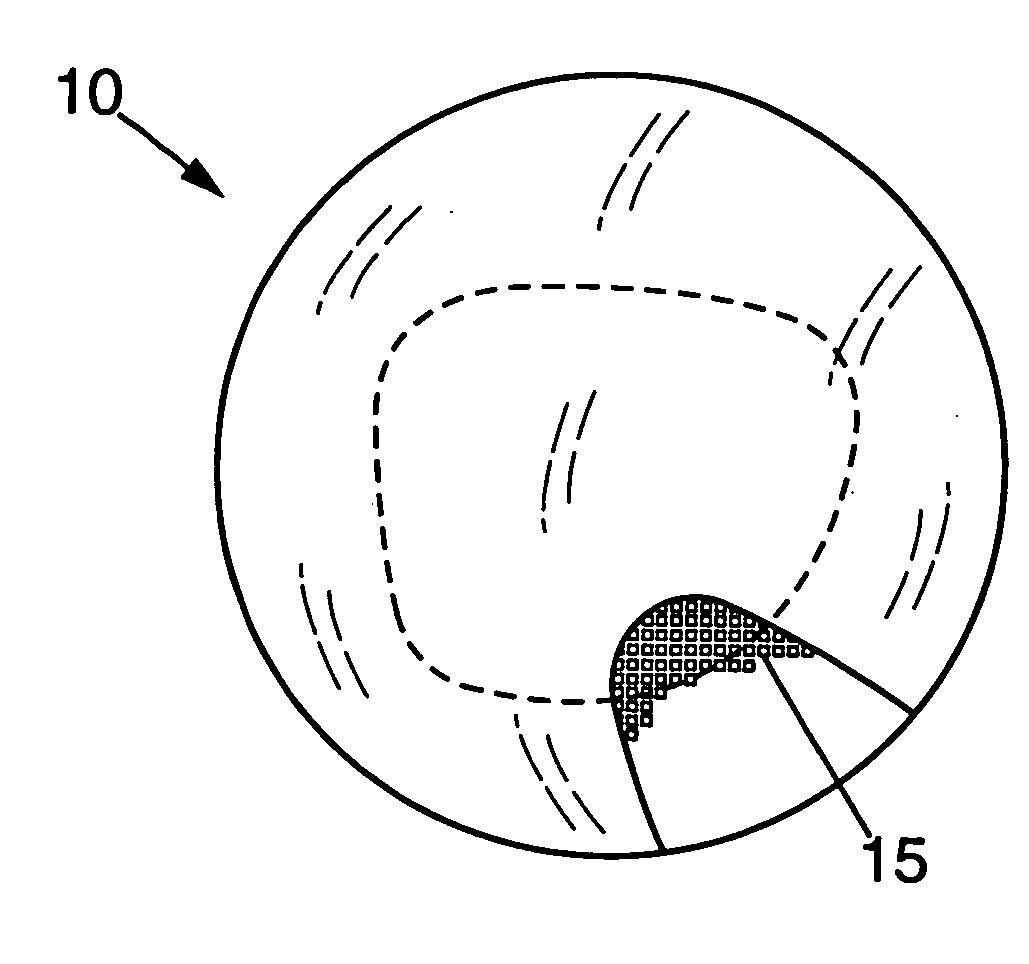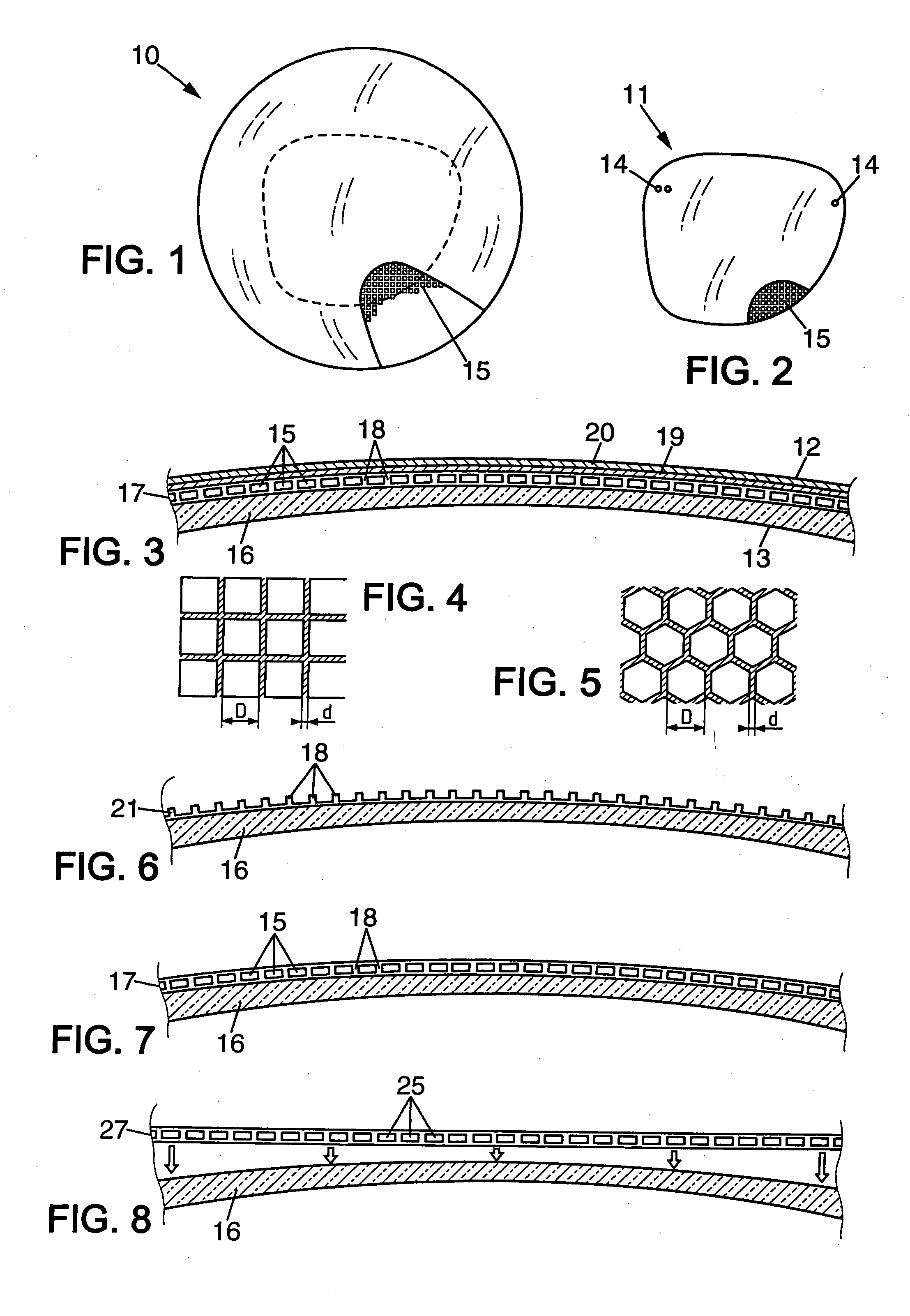Process for producing a transparent optical element, optical component involved in this process and optical element thus obtained
a technology of transparent optical elements and process steps, applied in the direction of optical radiation measurement, spectales/goggles, instruments, etc., can solve the problems of difficult implementation of methods, large loss of method attraction over conventional methods, and inability to lend themselves well to mass production, etc., to avoid excessively large cells, avoid undesirable diffractive effects, and achieve high fill factor of the optical surface
- Summary
- Abstract
- Description
- Claims
- Application Information
AI Technical Summary
Benefits of technology
Problems solved by technology
Method used
Image
Examples
Embodiment Construction
[0039] The optical component 10 shown in FIG. 1 is a blank for a spectacle lens. A spectacle lens comprises an ophthalmic lens. The term “ophthalmic lens” is understood to mean a lens that is fitted to a spectacle frame in order to protect the eye and / or correct the sight, these lenses being chosen from afocal, unifocal, bifocal, trifocal and varifocal lenses.
[0040] Although ophthalmic optics is the preferred field of application of the invention, it will be understood that this invention is applicable to transparent optical elements of other types, such as for example lenses for optical instruments, filters, optical sight lenses, eye visors, optics for illumination devices, etc. Included within the invention in ophthalmic optics are ophthalmic lenses, but also contact lenses and ocular implants.
[0041]FIG. 2 shows a spectacle lens 11 obtained by cutting the blank 10 around a predefined outline, shown by the broken line in FIG. 1. In principle, this outline is arbitrary, provided t...
PUM
 Login to View More
Login to View More Abstract
Description
Claims
Application Information
 Login to View More
Login to View More - R&D
- Intellectual Property
- Life Sciences
- Materials
- Tech Scout
- Unparalleled Data Quality
- Higher Quality Content
- 60% Fewer Hallucinations
Browse by: Latest US Patents, China's latest patents, Technical Efficacy Thesaurus, Application Domain, Technology Topic, Popular Technical Reports.
© 2025 PatSnap. All rights reserved.Legal|Privacy policy|Modern Slavery Act Transparency Statement|Sitemap|About US| Contact US: help@patsnap.com


